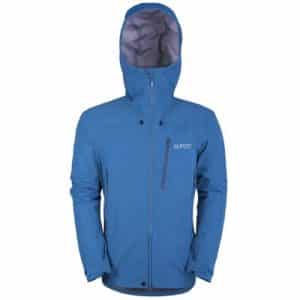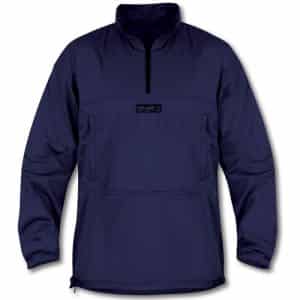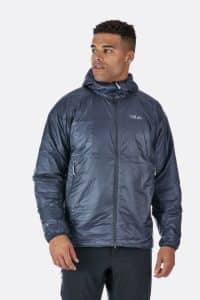[vc_row][vc_column][vc_column_text]Autumn is well and truly with us and if you’re anything like us, you won’t want a little bit of inclement weather to stop you getting outside to play.
There is no such thing as bad weather, only bad clothing. You’ll have heard this before, no doubt, but it is true. Not all of us want to push the boundaries of human discomfort by braving arctic conditions, but for most of us there should be no reason to put-off getting outside in cold/ windy/ wet weather with a little bit of planning and foresight.
What kinds of things do you need to consider before a winter outing?
- Decide where you are going to go and with who
- Check the weather forecast
- Decide what you need to wear
- Decide what extra clothing you will need as back-up
Hopefully that doesn’t sound too ominous so far!
Decide where you are going to and with who
If you already have somewhere in mind to go for a bike ride, a hill walk or perhaps a canoe trip (all of which are perfectly acceptable things to do in winter), then you’re ahead of the game. You may already have experienced various weather conditions on previous visits or at least have an idea of what it can be like. If you’ve not been before then you may not be aware of these things or the terrain that you’ll encounter. For example, after heavy rain there might be a lot more mud to slow your progress down, or it might be particularly open to strong winds.
If you’re going with someone else you need to bare in mind their levels of experience too. Are they are likely to have the right clothing to join you on the adventure? This is particularly relevant if going with kids. Think carefull about this.
Check the weather forecast
This should be easy, but it can be confusing. You might look at one forecast – ahhh sunshine – but then look at a different forecast for the same are and it says cloud and light rain. Not helpful.
There are loads of forecasting tools out there, my favourites being XC weather (often better for west of Scotland) and YR.no (a Norwegian based service, better for the east coast in my experience). I also like Windy.com. A more specialist, and excellent weather service is the Mountain Weather Information Service, particularly good if you’re heading for the hills.
So, although you may get conflicting forecasts the rule of thumb should always be to prepare for the worst case scenario. Conditions can change quickly all year round, however, in the winter months, you have the additional risk of being very cold and wet, as opposed to just being wet. Hypothermia is a much bigger risk if you get too cold with no way of raising your body temperature, you could find yourself in trouble. If it looks really bad, maybe think about somewhere else or postpone until another day.
Decide what you need to wear for your day out or expedition
As outdoor enthusiasts we are very fortunate to have access to many amazing outdoor clothing brands these days. There is something out there for every situation, every eventuality, and every pocket. I do enjoy spending my pocket money on new gear, but it can be expensive. However, you don’t have spend a fortune on clothing.
What do you need?
Waterproof jackets
- In my opinion the two most important items you
 should concentrate on are your shell-layer (waterproof) and your footwear. Get this right, and the rest should be easier. If you are going to prioritise spending on new kit, this is where you should spend more.
should concentrate on are your shell-layer (waterproof) and your footwear. Get this right, and the rest should be easier. If you are going to prioritise spending on new kit, this is where you should spend more. - A waterproof that breathes (because you still get sweaty in winter, whether walking, biking or paddling) and that keeps the rain out, is a valuable piece of equipment. These jackets can be expensive, but you probably want to prioritise waterproofing qualities over breathability if you have to make a compromise. If you are sweating, you can take off a base or mid-layer but you can’t stop it raining! You don’t need a specialist waterproof if you’re going paddling either, as a semi-decent quality waterproof should do the job (depending on the nature of your adventure). Look after you waterproof jacket by keeping it clean and re-proof it every once in a while. Perhaps something like Granger’s Wash-in Waterproofing.
- I’m currently using an Alpkit Definition waterproof, which although relatively new, appears to be doing a great job. For years I had Mountain Equipment jackets which always did the job extremely well but have tried Alpkit for a change, and partly due to cost.
Footwear
 On your feet, you want something comfortable, robust and waterproof. You really don’t want wet feet on a cold day, because the lower circulation of blood in your toes means they are harder to keep warm. Get them wet, it’s even harder. It’s perhaps less of an issue on a 2-hr mountain bike ride when you have a warm car to climb back into, but if you’re out for hours or days, that can be a real problem. So, think hard about what you wear on your feet, including the types of socks. There are some great socks these days too, including both natural fibres like wool and synthetic options too.
On your feet, you want something comfortable, robust and waterproof. You really don’t want wet feet on a cold day, because the lower circulation of blood in your toes means they are harder to keep warm. Get them wet, it’s even harder. It’s perhaps less of an issue on a 2-hr mountain bike ride when you have a warm car to climb back into, but if you’re out for hours or days, that can be a real problem. So, think hard about what you wear on your feet, including the types of socks. There are some great socks these days too, including both natural fibres like wool and synthetic options too.
- I’ve got a pair of Scarpa SL Active walking boots, which I can wear all year-round. I love them! They’re quite heavy for summer boots, but given Scottish conditions they never fail me on wet days in rough terrain. They also take crampons in the winter, so really are a 4-season boot unless you start thinking about a bit of winter mountaineering! I always wear liner socks (Bridgedale) then warm synthetic socks (also Bridgedale). Have worn their socks for decades (though not the same ones)!
Layering – you are always best to adopt a layering approach rather than wearing just one really warm item of clothing. This will allow you to take off a layer or two, if too warm. Equally, if you get cold, you can add a layer again.
 Base layer – this is the thing that you wear next to your skin. This should be wool or some kind of synthetic material, but not cotton. If you sweat, the cotton will act like a sponge and hold the moisture next to your skin. Apart from being uncomfortable, if you get cold, you will stay cold. The benefit of wool based and synthetic materials (e.g. modern sportswear) is that the moisture is drawn away from the body and helps keep you drier. You may find this isn’t enough for high-energy activities though, and you will still be sweaty. Also have a good think about your pants! Remember, cotton boxers might be your go-to option, but things get warm and sweaty down there too. So, think wool or modern synthetic undies to wick the sweat away and keep you comfortable, without chaffing!
Base layer – this is the thing that you wear next to your skin. This should be wool or some kind of synthetic material, but not cotton. If you sweat, the cotton will act like a sponge and hold the moisture next to your skin. Apart from being uncomfortable, if you get cold, you will stay cold. The benefit of wool based and synthetic materials (e.g. modern sportswear) is that the moisture is drawn away from the body and helps keep you drier. You may find this isn’t enough for high-energy activities though, and you will still be sweaty. Also have a good think about your pants! Remember, cotton boxers might be your go-to option, but things get warm and sweaty down there too. So, think wool or modern synthetic undies to wick the sweat away and keep you comfortable, without chaffing!
- So many brands to choose from. I do love a bit of merino, but still often wear the likes of Rab, Saxx, Haglofs, Berghaus sunthetic base layers too.
 Mid-layer – next comes the in-between bit. Perhaps a light, long-sleeved synthetic layer or micro-fleece. Perhaps you prefer a mid-weight merino layer. Whatever you choose it should ideally be reasonably lightweight and breathable, working nicely with the layering system.
Mid-layer – next comes the in-between bit. Perhaps a light, long-sleeved synthetic layer or micro-fleece. Perhaps you prefer a mid-weight merino layer. Whatever you choose it should ideally be reasonably lightweight and breathable, working nicely with the layering system.
- I have a well-used Paramo Explorer Reversible pull-over for years, which has been used for walking, biking and boating. A great piece of clothing for all seasons (quite warm though).
- Insulation – everybody’s favourite bit on a cold day. This might be a nice warm primaloft jacket (synthetic filling that works even when wet). Some prefer the cosiest of them all, a down/ feather filled puffa-jacket, but bear in mind if it gets wet, it won’t work as well in keeping you warm. The weather forecast that you already have, should influence what you take with you. You could also use a really warm fleece layer, which will keep you warm, but can be bulkier to carry when not in use.
 I have a trusty, (very old) Rab Primaloft jacket for cold days. I normally don’t take my down jacket to wear, but might go in my bag for emergencies or stopping for lunch.
I have a trusty, (very old) Rab Primaloft jacket for cold days. I normally don’t take my down jacket to wear, but might go in my bag for emergencies or stopping for lunch.
- Head wear – don’t forget a warm hat, as you may regret it if you don’t. Woolly or synthetic are fine, just make sure it is cosy. I also like to use a buff (synthetic stretchy, multi-use tube of material). It’s great for when it’s not too cold, but it can also be used to keep your neck warm, protect your mouth and nose from cold air or even as a head sweat band (not a good look!)
- I wear my Spiderman buff a lot! If it’s really cold I have a selection of beanies that I have had for years and take whatever suits the mood. They include a Haglofs one I bought, a freebie with a mountain bike magazine and one I got as a Christmas present.
 Gloves – like you toes, fingers can get cold very quickly. Unlike your toes, your fingers don’t tend to do as much work if walking, so will get cold easier. I often wear a thin underglove, then a warmer pair on top. If you’ve ever tried putting a wet or sweaty hand back in a close-fitting pair of gloves, you’ll understand the huge benefit of an under-glove. Thin, light and cheap – great investment! If you can stretch to a pair of waterproof over gloves that helps a lot on a cold, wet, windy day.
Gloves – like you toes, fingers can get cold very quickly. Unlike your toes, your fingers don’t tend to do as much work if walking, so will get cold easier. I often wear a thin underglove, then a warmer pair on top. If you’ve ever tried putting a wet or sweaty hand back in a close-fitting pair of gloves, you’ll understand the huge benefit of an under-glove. Thin, light and cheap – great investment! If you can stretch to a pair of waterproof over gloves that helps a lot on a cold, wet, windy day.
- I get cold fingers so have light undergloves (cheap as chips), some Marmot softshell/ leather-palmed gloves for cool weather, and some really cosy Black Diamond mits when it gets really chilly.
 Legs – last but certainly not least, what should you wear on your bottom half? Again, lots of options, including a layering system. My go-to trousers for walking these days are both fairly water-resistant, breathable and pretty warm. They are pretty good in most conditions, although if it gets really wet, I’d still need some over-trousers. You might choose a pair of comfy leggings, some more robust soft-shell trousers or fleecey troos. If you’re out on a bike, you might have some winter trousers. I still go out in shorts in winter occasionally though!
Legs – last but certainly not least, what should you wear on your bottom half? Again, lots of options, including a layering system. My go-to trousers for walking these days are both fairly water-resistant, breathable and pretty warm. They are pretty good in most conditions, although if it gets really wet, I’d still need some over-trousers. You might choose a pair of comfy leggings, some more robust soft-shell trousers or fleecey troos. If you’re out on a bike, you might have some winter trousers. I still go out in shorts in winter occasionally though!
- I use Paramo Cascada trousers most of the time for walking. I also have big heavy Mountain Equipment waterproof over trousers for when it is really wet, but don’t often use them these days, opting for a lightweight, more packable option instead.
Spare clothing
You perhaps can’t take spares of everything, but take an extra warm layer for lunch time, or should you sprain an ankle and have to wait for help. Take extra gloves, in case they get wet or blow away in the wind (this happened to me once – never again!). The extras you take will very much depend on how long you are heading out for and where. But as I said before, think worst-case scenario and ask for advice if you need it.
Rucksack size
Remember that if you start your day with all your clothing on and subsequently find that things are heating up a bit much, you will need a rucksack big enough to carry it. If you’ve already got lunch, a flask of your favourite soup, a bivvy bag or emergency shelter, camera, head torch, etc in there, there might not be much room left. Again, there are lots of cheaper options nowadays. You don’t need to spend a fortune on rucksacks, in order to get the one that works for you.
So, what should you wear?
Whatever you wear, your choice of clothing on the day should be influenced by the weather forecast and where you think you might end up. For example, I don’t mind getting a bit cold and damp if I have car to go back to, but I really don’t want to be wet and cold if camping out overnight.
Remember that if you are organising a day out or expedition for a group, not everyone will think along the same lines. It is therefore recommended that your group have a good chat about kit and clothing minimum requirements before you go anywhere. Some may be able to borrow items of clothing from others if they don’t have something in particular.
These clothing principles apply to walkers, bikers and paddlers alike. Layer up, take spares, plan ahead and think about where you are going and how long you are going to be out for. Your decisions during planning, could make or break a day out for you and might even save your life.
I hope you’ve found this useful, particularly if you have plans afoot for the coming months. Do share it with friends or family if it has helped you.
Have a great winter exploring the outdoors.[/vc_column_text][/vc_column][/vc_row]






 On your feet, you want something comfortable, robust and waterproof. You really don’t want wet feet on a cold day, because the lower circulation of blood in your toes means they are harder to keep warm. Get them wet, it’s even harder. It’s perhaps less of an issue on a 2-hr mountain bike ride when you have a warm car to climb back into, but if you’re out for hours or days, that can be a real problem. So, think hard about what you wear on your feet, including the types of socks. There are some great socks these days too, including both natural fibres like wool and synthetic options too.
On your feet, you want something comfortable, robust and waterproof. You really don’t want wet feet on a cold day, because the lower circulation of blood in your toes means they are harder to keep warm. Get them wet, it’s even harder. It’s perhaps less of an issue on a 2-hr mountain bike ride when you have a warm car to climb back into, but if you’re out for hours or days, that can be a real problem. So, think hard about what you wear on your feet, including the types of socks. There are some great socks these days too, including both natural fibres like wool and synthetic options too.
 Base layer – this is the thing that you wear next to your skin. This should be wool or some kind of synthetic material, but not cotton. If you sweat, the cotton will act like a sponge and hold the moisture next to your skin. Apart from being uncomfortable, if you get cold, you will stay cold. The benefit of wool based and synthetic materials (e.g. modern sportswear) is that the moisture is drawn away from the body and helps keep you drier. You may find this isn’t enough for high-energy activities though, and you will still be sweaty. Also have a good think about your pants! Remember, cotton boxers might be your go-to option, but things get warm and sweaty down there too. So, think wool or modern synthetic undies to wick the sweat away and keep you comfortable, without chaffing!
Base layer – this is the thing that you wear next to your skin. This should be wool or some kind of synthetic material, but not cotton. If you sweat, the cotton will act like a sponge and hold the moisture next to your skin. Apart from being uncomfortable, if you get cold, you will stay cold. The benefit of wool based and synthetic materials (e.g. modern sportswear) is that the moisture is drawn away from the body and helps keep you drier. You may find this isn’t enough for high-energy activities though, and you will still be sweaty. Also have a good think about your pants! Remember, cotton boxers might be your go-to option, but things get warm and sweaty down there too. So, think wool or modern synthetic undies to wick the sweat away and keep you comfortable, without chaffing!

 I have a trusty, (very old) Rab Primaloft jacket for cold days. I normally don’t take my down jacket to wear, but might go in my bag for emergencies or stopping for lunch.
I have a trusty, (very old) Rab Primaloft jacket for cold days. I normally don’t take my down jacket to wear, but might go in my bag for emergencies or stopping for lunch. Gloves – like you toes, fingers can get cold very quickly. Unlike your toes, your fingers don’t tend to do as much work if walking, so will get cold easier. I often wear a thin underglove, then a warmer pair on top. If you’ve ever tried putting a wet or sweaty hand back in a close-fitting pair of gloves, you’ll understand the huge benefit of an under-glove. Thin, light and cheap – great investment! If you can stretch to a pair of waterproof over gloves that helps a lot on a cold, wet, windy day.
Gloves – like you toes, fingers can get cold very quickly. Unlike your toes, your fingers don’t tend to do as much work if walking, so will get cold easier. I often wear a thin underglove, then a warmer pair on top. If you’ve ever tried putting a wet or sweaty hand back in a close-fitting pair of gloves, you’ll understand the huge benefit of an under-glove. Thin, light and cheap – great investment! If you can stretch to a pair of waterproof over gloves that helps a lot on a cold, wet, windy day.
